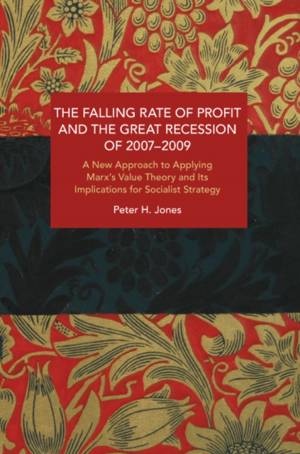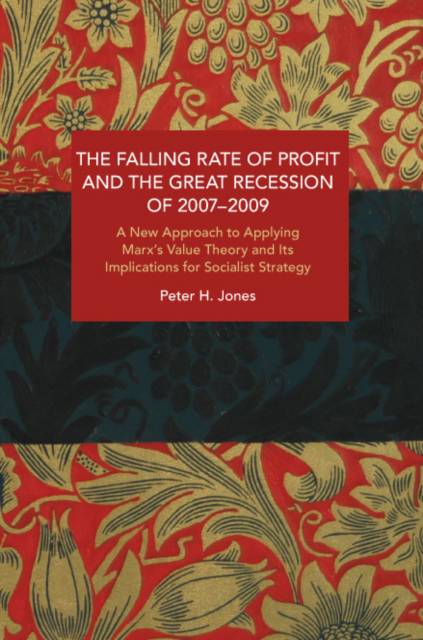
- Afhalen na 1 uur in een winkel met voorraad
- Gratis thuislevering in België vanaf € 30
- Ruim aanbod met 7 miljoen producten
- Afhalen na 1 uur in een winkel met voorraad
- Gratis thuislevering in België vanaf € 30
- Ruim aanbod met 7 miljoen producten
Zoeken
The Falling Rate of Profit and the Great Recession of 2007-2009
A New Approach to Applying Marx's Value Theory and Its Implications for Socialist Strategy
Peter H Jones
€ 40,45
+ 80 punten
Omschrijving
In this ground breaking contribution to Marxist economic theory, Peter H. Jones provides a comprehensive analysis of profit rates in the lead up to the Great Recession.
The Falling Rate of Profit and the Great Recession of 2007-2009 develops a new interpretation of Marx's labour theory of value rooted in non-equilibrium, and applies this theory to US national accounting data. In so doing Jones shows that, when measured correctly, the profit rate falls in the lead up to the Great Recession due to the rising organic composition of capital--the primary reason for crises in Marx's own account.
From there Jones also details a new theory of finance, showing how cycles in the profit rate relate to stock market booms and slumps, and movements in the interest rate. He then discusses the implications of this analysis, and Marx and Engels' work generally, for a democratic socialist strategy.
The Falling Rate of Profit and the Great Recession of 2007-2009 develops a new interpretation of Marx's labour theory of value rooted in non-equilibrium, and applies this theory to US national accounting data. In so doing Jones shows that, when measured correctly, the profit rate falls in the lead up to the Great Recession due to the rising organic composition of capital--the primary reason for crises in Marx's own account.
From there Jones also details a new theory of finance, showing how cycles in the profit rate relate to stock market booms and slumps, and movements in the interest rate. He then discusses the implications of this analysis, and Marx and Engels' work generally, for a democratic socialist strategy.
Specificaties
Betrokkenen
- Auteur(s):
- Uitgeverij:
Inhoud
- Aantal bladzijden:
- 226
- Taal:
- Engels
- Reeks:
Eigenschappen
- Productcode (EAN):
- 9781642593327
- Verschijningsdatum:
- 29/11/2022
- Uitvoering:
- Paperback
- Formaat:
- Trade paperback (VS)
- Afmetingen:
- 152 mm x 226 mm
- Gewicht:
- 381 g

Alleen bij Standaard Boekhandel
+ 80 punten op je klantenkaart van Standaard Boekhandel
Beoordelingen
We publiceren alleen reviews die voldoen aan de voorwaarden voor reviews. Bekijk onze voorwaarden voor reviews.











